We receive and publish the following review of the exhibition Caravaggio Napoli.
Concise title, rich exhibition. Caravaggio Napoli, curated by Maria Cristina Terzaghi and Sylvain Bellenger, aims to explore Caravaggio’s painting and his Neapolitan following from the “18 months” the artist lived in the city, in two phases. The first, beginning between Sept. 23 and Oct. 6, 1606, and ending immediately after June 24, 1607 although punctually unknown (but the catalog mentions the very day of the 24th, or 25th); the second beginning, we are told, before Oct. 24, 1609, and ending in the summer of 1610 (certainly after May 11 and before July 18). And here, however, there is another oversight: none of the scholars involved must have fully assimilated the news of the 2011 exhibition at the State Archives in Rome, in which it was made clear that the October date refers to another document, while what is certain is that Merisi was again in the viceregal capital on (however close) November 7.
Beyond that premise of chronological framing, which will be of interest and on which more specialists are pinning their hopes, there are six paintings by the master brought to the Sala Causa (for a seventh, see below). Perhaps for the first time in a major retrospective since the 2010 one at the Scuderie del Quirinale, all of undoubted authorship. And so here they are: the two Flagellations from Naples and Rouen, the two Salome with the Head of the Baptist from Madrid and London, the Borghese’s Saint John the Baptist, and the Martyrdom of Saint Ursula. Much has been written in recent times about the ’true’ Magdalene in Ecstasy, versions of which were most credited and were brought to Paris in an exhibition, Caravage à Rome. Amis et ennemis, in which the curator of Caravaggio Napoli had taken part. Recalling that, on that occasion, she had been careful not to comment on the subject (however, one of the two versions was attributed by the authoritative Mina Gregori), the diatribe is now put to rest by bringing two declared copies to Capodimonte. In any case, one appreciates the adoption of the new chronology of the Merisian prototype, 1610 instead of 1606 and thus in a sense an addition to the Neapolitan period, although some disagreement remains in the catalog on this, between the curatorship and the author of a card (how can one not agree with the former!).
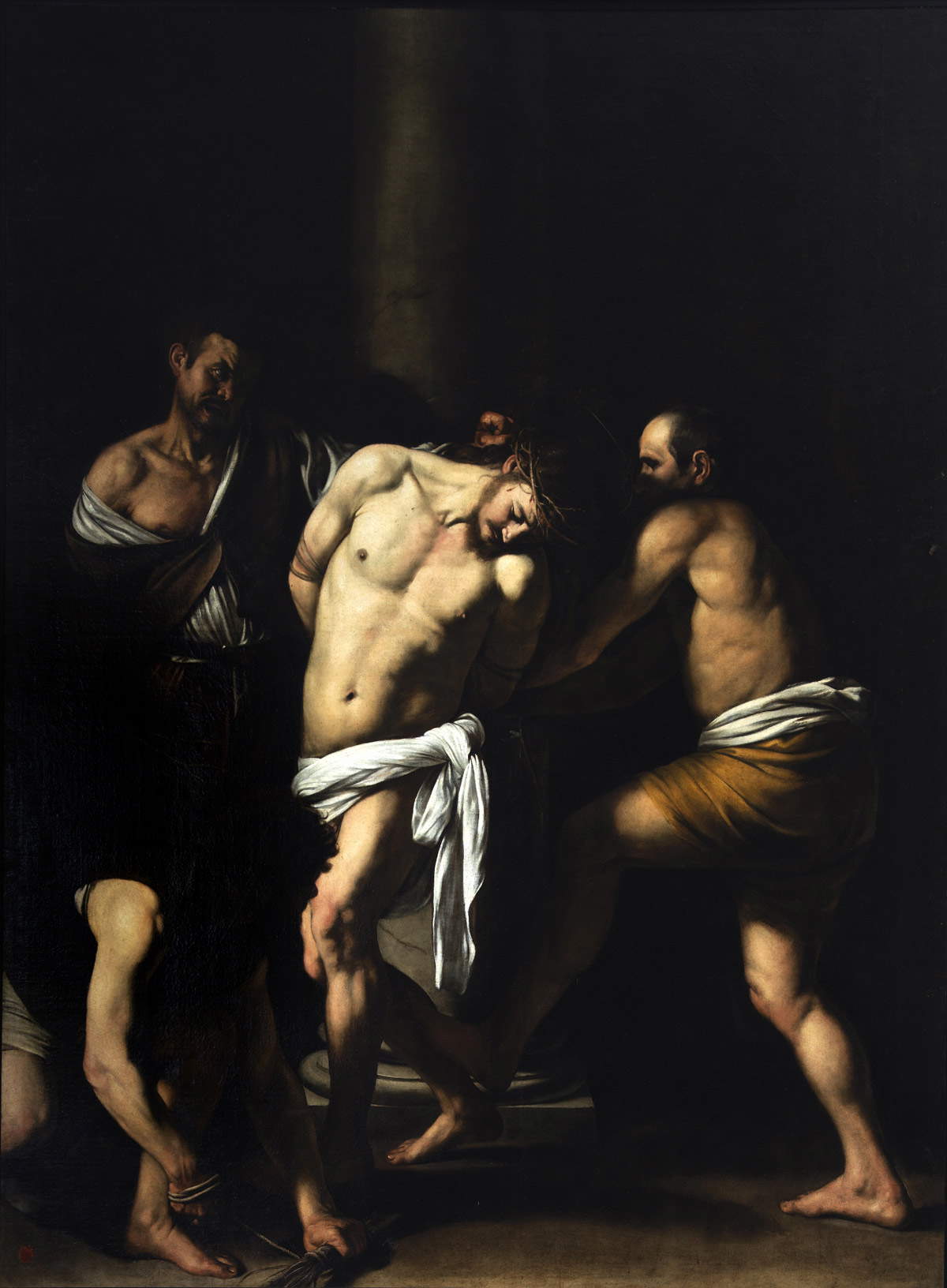 |
| Caravaggio, Flagellation (1607; oil on canvas, 266 x 213 cm; Naples, Museo e Real Bosco di Capodimonte). Photo by Luciano Roman |
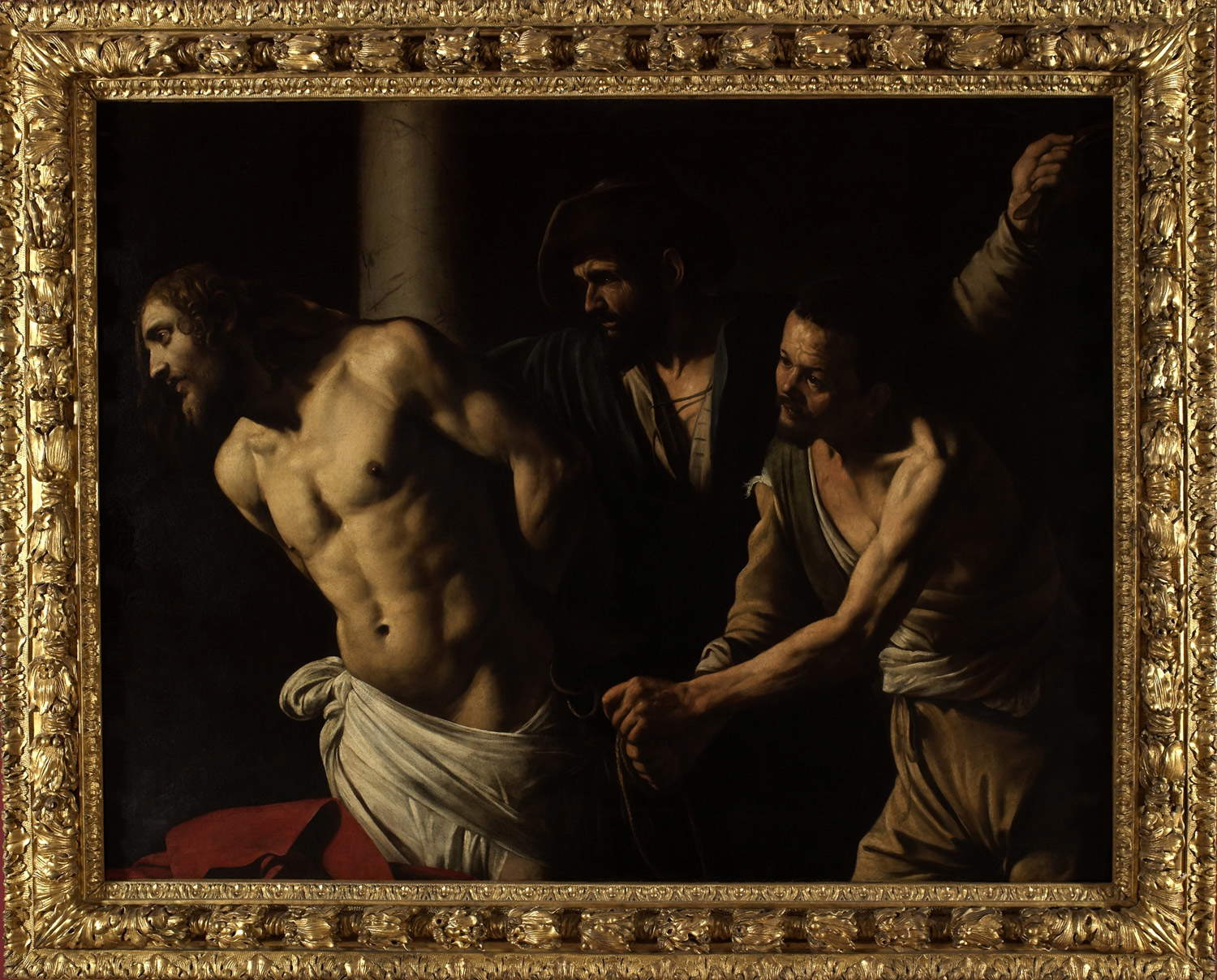 |
| Caravaggio, Flagellation (1607; oil on canvas, 134.5 x 175.5 cm; Rouen, Musée des Beaux-Arts) © C. Lancien, C. Loisel /Réunion des Musées Métropolitains Rouen Normandie |
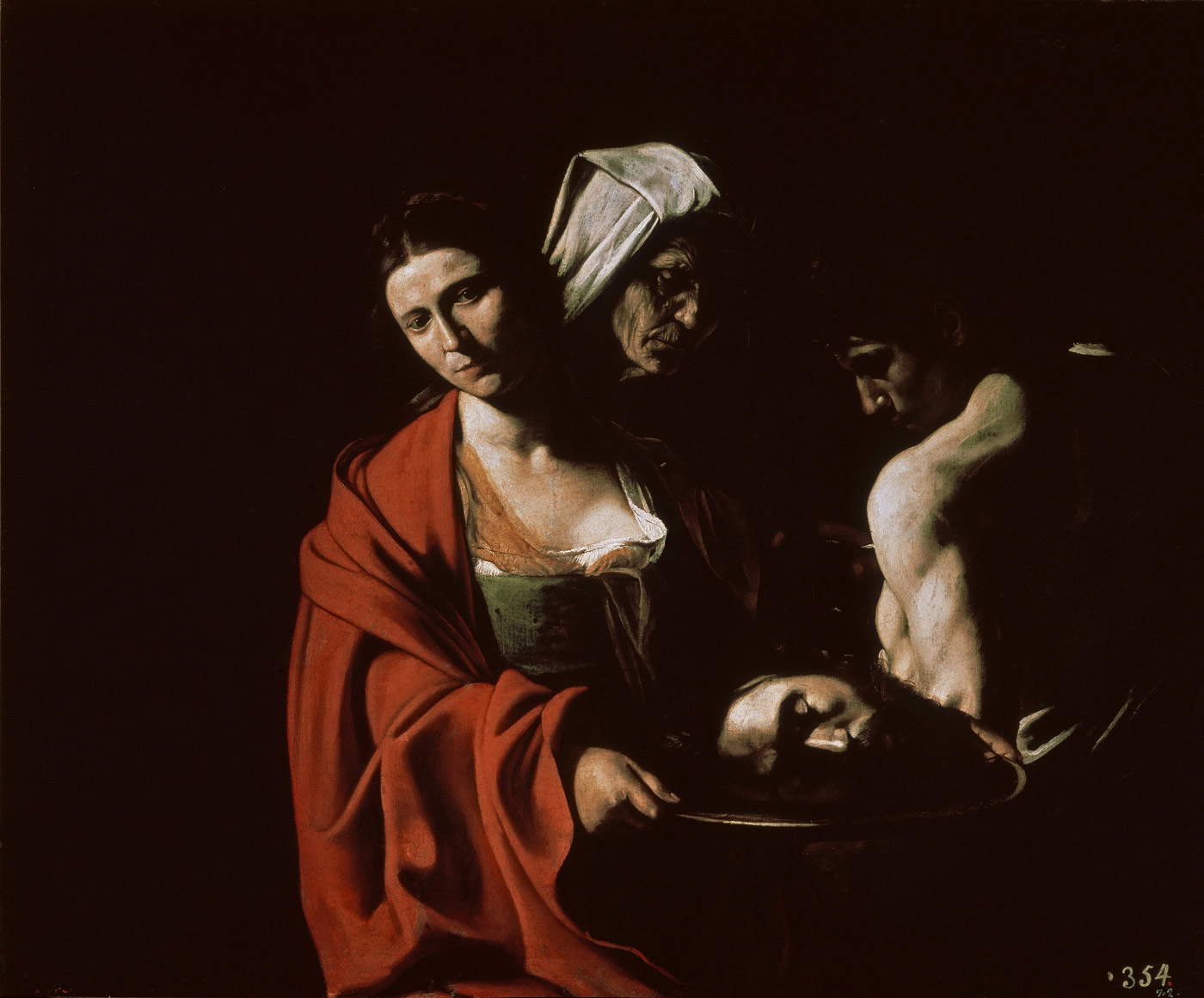 |
| Caravaggio, Salome with the Head of Baptist (c. 1607; oil on canvas, 116 x 140 cm; Madrid, Palacio Real) |
 |
| Caravaggio, Salome with the Head of Baptist (1609; oil on canvas, 91.5 x 106.7 cm; London, National Gallery) © Scala Group Archive, Antella / © 2019. Copyright The National Gallery, London / Scala, Florence |
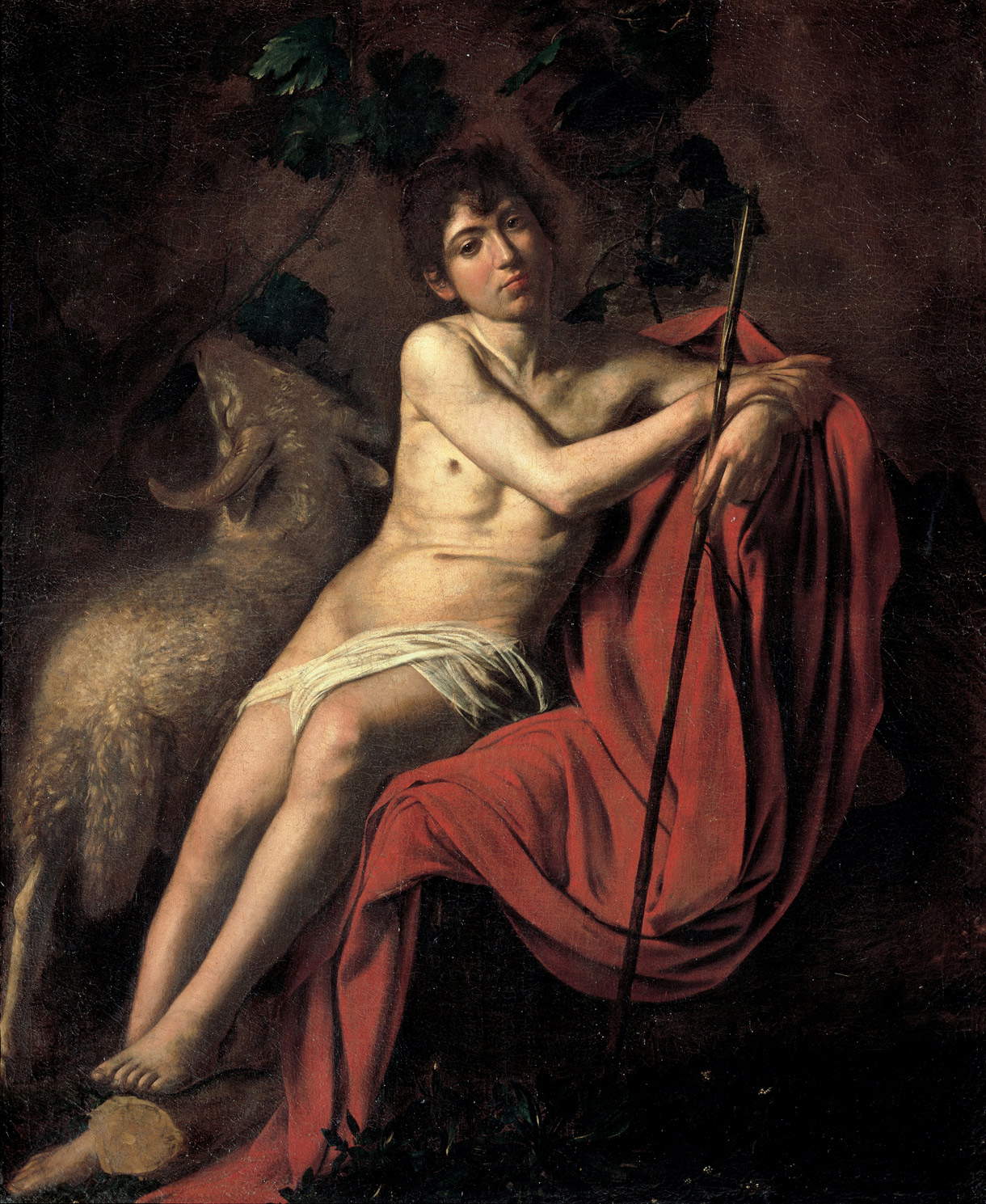 |
| Caravaggio, Saint John the Baptist (1610; oil on canvas, 159 x 124 cm; Rome, Galleria Borghese). Photo © Bridgeman Images |
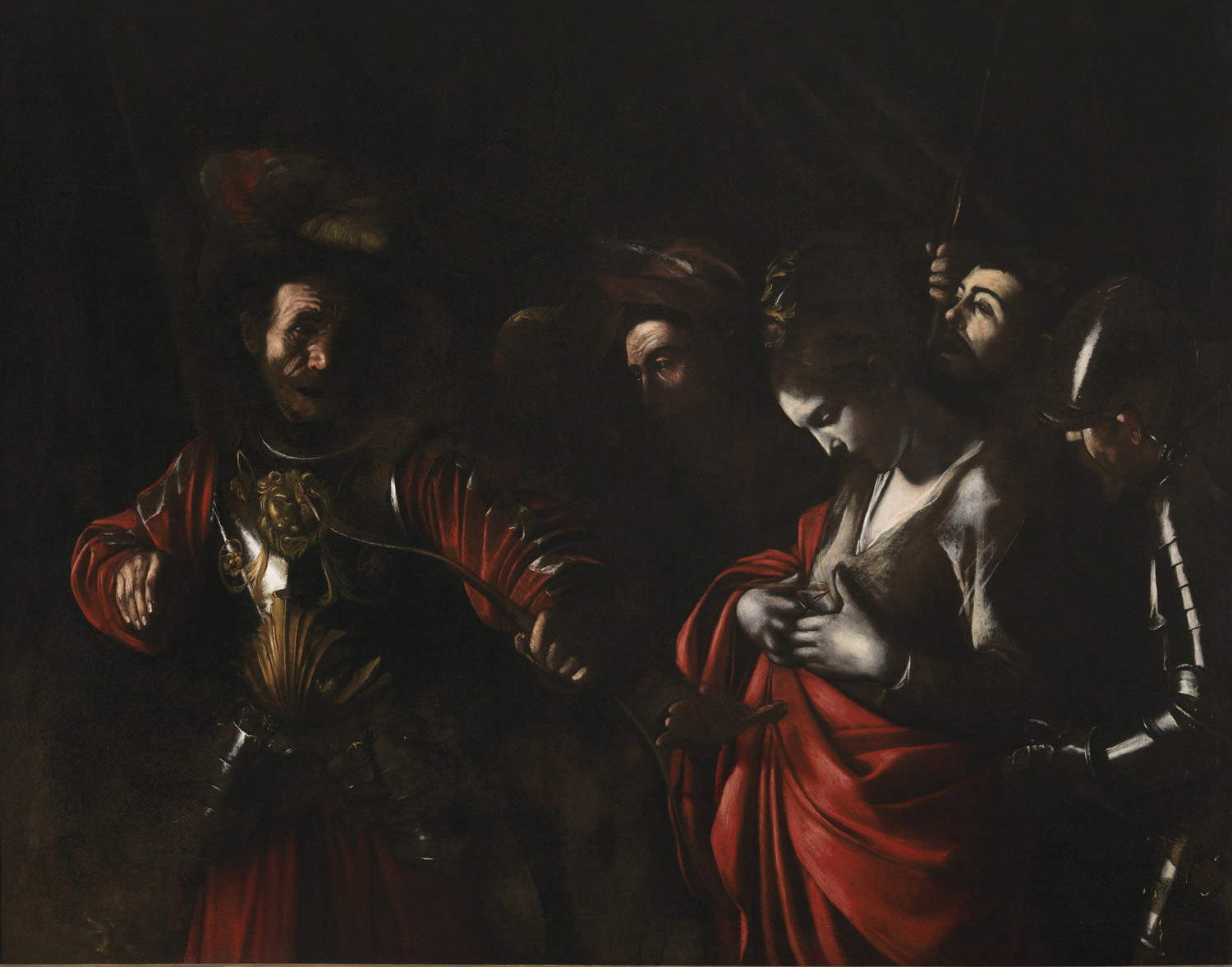 |
| Caravaggio, Martyrdom of St. Ursula (1610; oil on canvas, 143 x 180 cm; Naples, Gallerie dItalia, Palazzo Zevallos Stigliano, Intesa Sanpaolo, Archivio Patrimonio Artistico). Photo Luciano Pedicini |
If the Galleria Borghese evidently could not lend a second painting, the David with the Head of Goliath, which would have been significant for the exhibition itinerary, it is difficult to remain insensitive to the absence of two masterpieces, which would have made the illustration of the Neapolitan itinerary almost exhaustive and the scope of the event exceptional. We are talking about the Negation of Peter and the Crucifixion of St. Andrew, at least the latter a great and justified absentee: it must be considered immovable by the Cleveland museum, due to its fragility and taking into account that it is just back from a long and delicate restoration (documented by the video projected in a small room). Around its ideal presence, however, a specific section is centered, with paintings somehow inspired by it (but this does not seem to be the case with Hendrick van Somer’s Martyrdom of Saint Sebastian ). In the same room, moreover, is the similar subject of Louis Finson da Rougiers, exhibited for the first time after restoration. On the basis of the inscription in a painted cartouche, difficult to read in the last digit, it is dated 1610; or alternatively 1615, which on closer inspection is unlikely (if anything, the last character might have looked like a 6: in any case, a circular mark appears evident). Returning to the Negation of Peter, there is now a bold hypothesis that would have it present on Caravaggio’s last journey from Naples to Porto Ercole. The idea is not supported by any source and indeed the documentary evidence goes in the opposite direction, however, so much is enough to have created a precedent that was not felt to be necessary, in the narrative of Caravaggio’s biography; which, especially at the level of popularization, is waiting for nothing more than to be fed by new hypotheses, even the most far-fetched, as long as they are fascinating and precisely ’original’. Also overlooked is Maurizio Marini’s hypothesis, published posthumously in the monograph by the equally late and greatest scholar of the Neapolitan Caravaggio Vincenzo Pacelli, that there may be doubts about the presence on the return journey to Rome of at least one among the three paintings that were there according to tradition (two St. Johns and a Magdalene).
We have discussed the absent autograph paintings. A separate discussion deserves the Seven Works of Mercy, which could not be moved from the Pio Monte della Misericordia, with a trail of controversy that has not yet subsided. Although officially (see also colophon) the exhibition appears to take place at the Museo e Real Bosco di Capodimonte alone, the large altarpiece is nevertheless listed and it was intended to consider the Pio Monte as a second venue for the exhibition (however, with separate fees, albeit reduced for those visiting one of the two venues after having been to the other). An interesting novelty, moreover, is the greater understanding we can now have about the configuration of the first chapel on Via dei Tribunali (the present building, it is later than 1658), as well as the verified presence, among the financiers of the nascent philanthropic institution established there, of the merchant Niccolò Radulovich (later Caravaggio’s patron). For the occasion in the church, hosting in an unplanned concomitance a work by Jan Fabre, all windows were darkened as if to restore the lighting to what it might have been in ancient times. More a suggestion of course, considering that one does not get to replace the light of modern spotlights with that of candles, but a virtue of necessity is made and it is certainly worth experimenting with the new, temporary solution. In addition, the entrance has been returned to the main door, opposite the high altar.
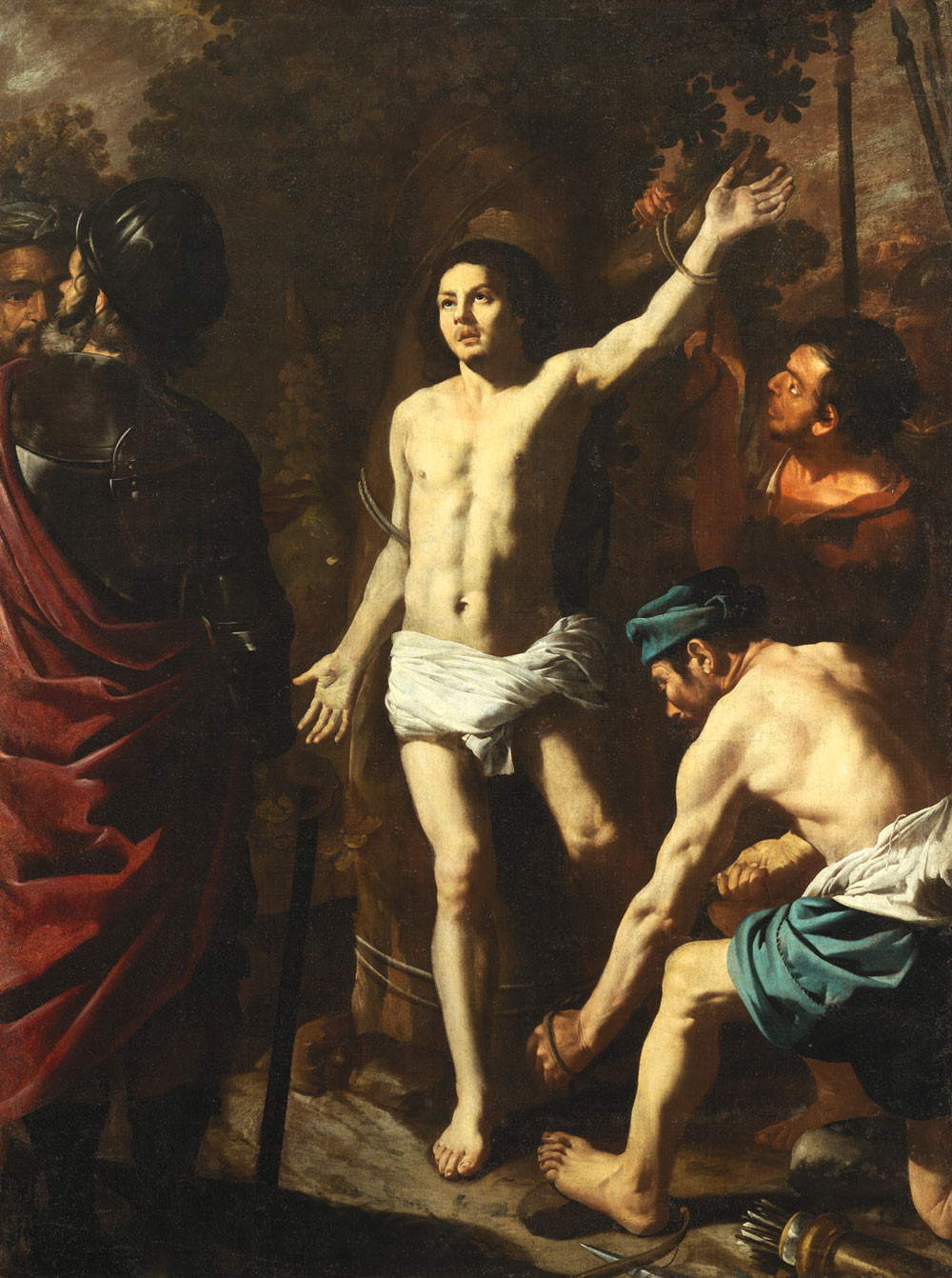 |
| Hendrik de Somer, Martyrdom of Saint Sebastian (ca. 1630; oil on canvas, 205 x 154 cm; Naples, Museo e Real Bosco di Capodimonte). Photo by Fabio Speranza |
 |
| Louis Finson, Martyrdom of Saint Sebastian (1610 or 1616?; oil on canvas, 220 x 162 cm; Rougiers, parish church) |
To conclude on the Seven Works, the new ultra-high-definition image taken by Google Arts a few days before the opening of the exhibition, which can be explored interactively in the last rooms, in restoring to us all the beauty of the painting and the many details of the complex composition, puts a tombstone (if already autopsy examination had not been enough) on recent sensationalist hypotheses, which would have liked to see, moreover, in the calf of an angel, an “orb of light” and, clasped together with the jaw of the so-called Samson, a “bunch of grapes” (sic). Google Arts & Culture, one of Caravaggio Napoli’s technical partners, has more generally now made images of several paintings in the exhibition accessible on the web, including through a specific “story” (virtual guided tour).
Other authors present at Capodimonte, in addition to those already mentioned, include Giovanni Baglione (the only Roman), and, among the most represented and representative, Giovanni Battista Caracciolo, Massimo Stanzione, and Jusepe de Ribera. A testimony to how in Naples, unlike in Urbe where the influence of the classicist current was strong, painting was extremely receptive to the ’lesson’ of Caravaggio. Alongside these we recall Carlo Sellitto, whose St. Francis Receiving the Stigmata is exhibited, imagining it an echo if not a close-up shot of the identical subject Merisi is said to have painted for a church later destroyed by an earthquake. The conditional is a must if, alongside rare biographical entries mentioning two other Caravaggesque paintings to adorn the same chapel, most sources mention and linger on only one (a Resurrection) while ignoring the others, so it seems much more likely that the latter two were at most painted by followers of the Lombard, or in any case were improperly associated with his production. Finally, indeed at the very opening of the tour, one has the opportunity to admire a drawing of the Vocation of St. Matthew by St. Louis of the French executed by Belisario Corenzio, as convincingly argued in the relevant card (lately there had been the isolated attempt to pass it off as a graphic proof by Merisi himself).
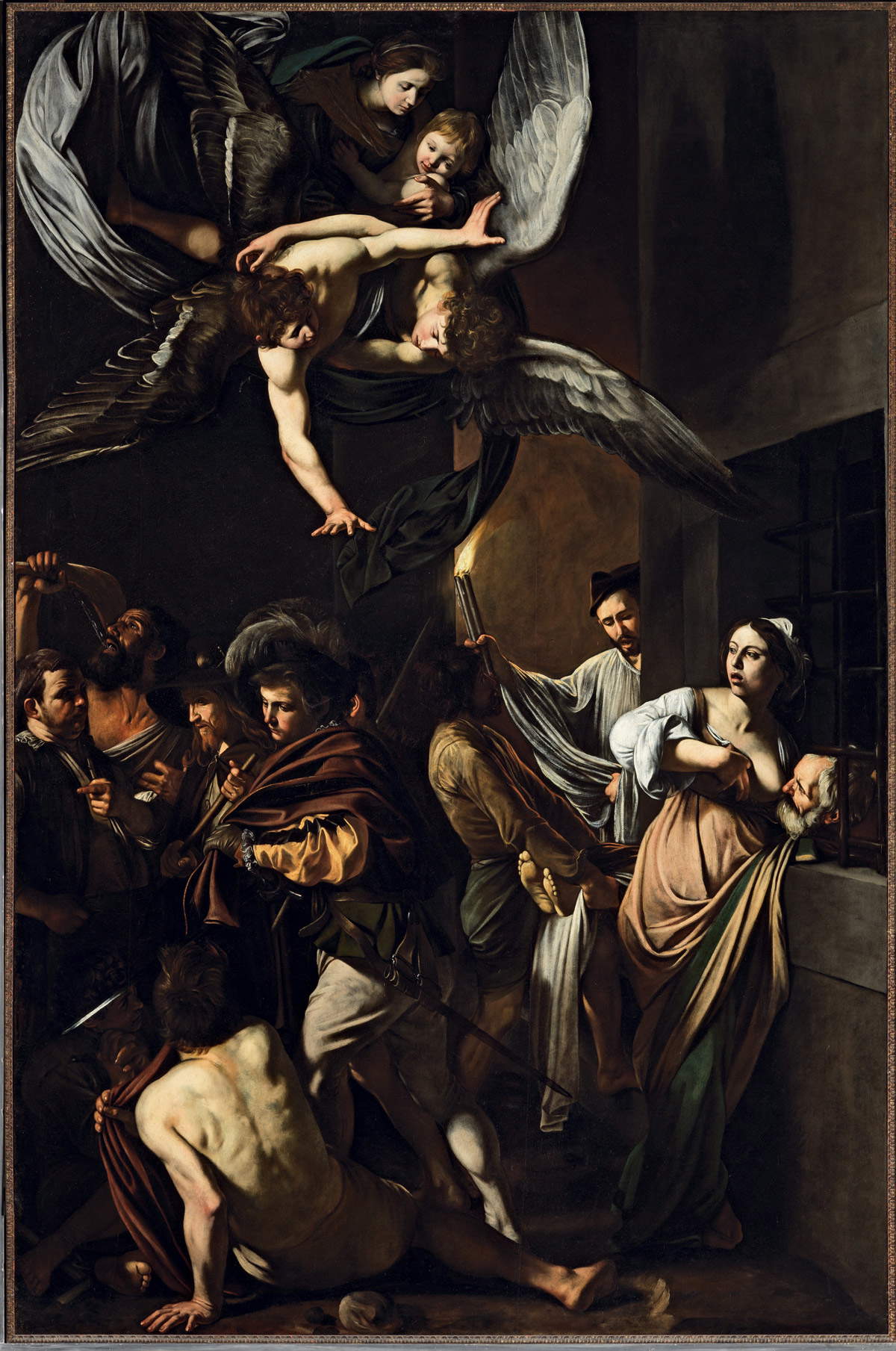 |
| Caravaggio, The Seven Works of Mercy (1606-1607; oil on canvas, 390 x 260 cm; Naples, Pio Monte della Misericordia) |
 |
| Caravaggio, The Seven Works of Mercy, detail |
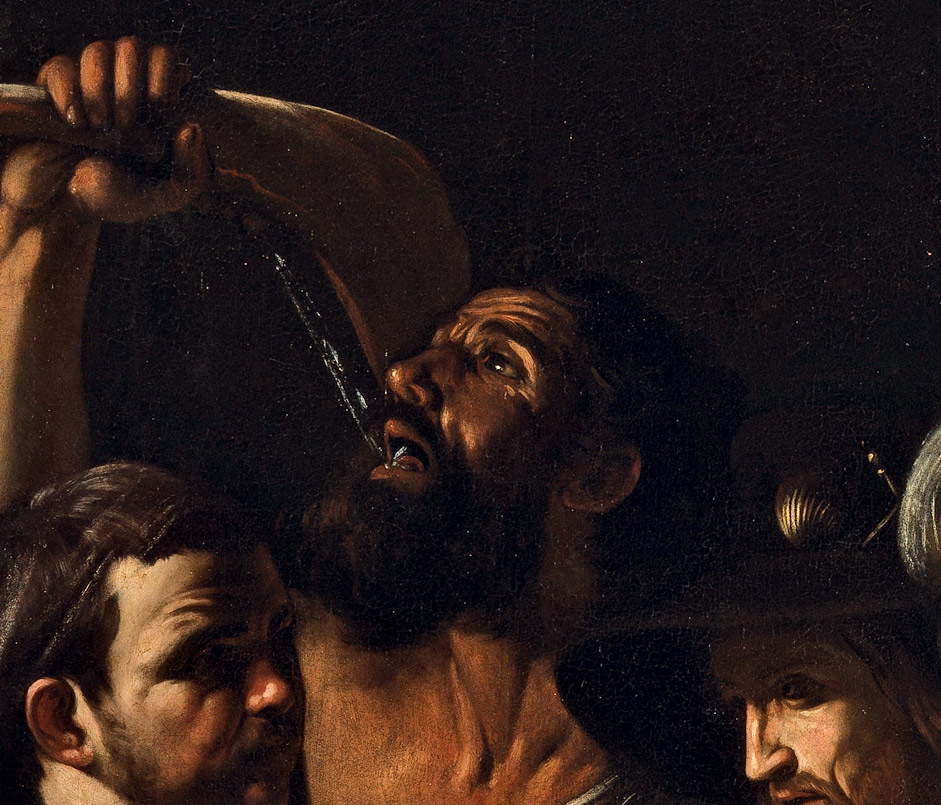 |
| Caravaggio, The Seven Works of Mercy, detail |
Much has been said so far about the contents of the catalog. We appreciate in this regard the intelligence and sensitivity of Maria Cristina Terzaghi, who has called scholars, young people in particular, who do not hold institutional positions, to work on it. After all, some recent acquisitions in the field of Caravaggesque studies we owe even to figures who do not even have a proper art-historical background (a case in point, the discovery of the painter’s baptismal certificate by a former retired executive of a well-known supermarket chain). In the volume, the essay section, which opens with the one (singularly without an apparatus of notes) on culture and philosophy in Caravaggio’s Naples, finds its brightest pen in the closing essay by Stefano Causa. It traces the Neapolitan exhibitions that, since 1938, have featured Caravaggio; and in doing so it lingers more on the twentieth-century ones, somewhat distancing itself from the 2004 exhibition (immediately preceding today’s), which nevertheless delivered to studies an indispensable text on southern Caravaggio (and to visitors a formidable experience).
Returning to and closing on the exhibition, one appreciates its tour route, moreover characterized (like it or not) by very low lighting, well researched and calibrated; with effective juxtapositions, between master and followers, based on the chosen subject and iconographic comparisons. For a concise overall judgment, an exhibition not to be missed at all. And also to return to.
Warning: the translation into English of the original Italian article was created using automatic tools. We undertake to review all articles, but we do not guarantee the total absence of inaccuracies in the translation due to the program. You can find the original by clicking on the ITA button. If you find any mistake,please contact us.